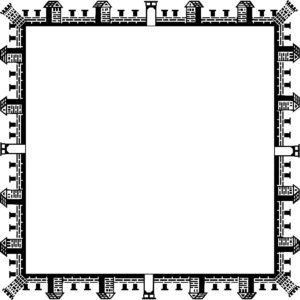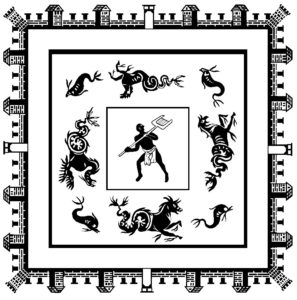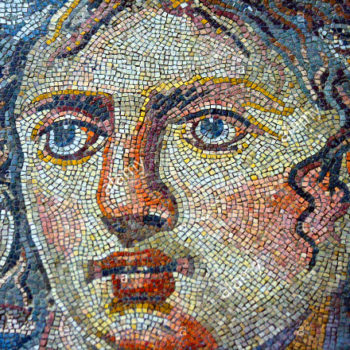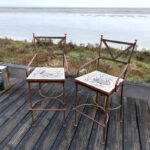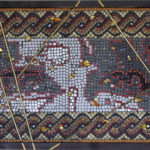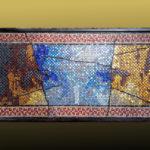This post treats of the analytical and synthetic aspects of recreating the Julia Felix mosaic.
3 stages of recreating the design of an antic mosaic are :
- Analysis of the mosaic to determine different elements and sub-elements.
- Actual re-creation of new elements.
- Assembly of the new elements to complete the design.
This post addresses points 1 and 3. Future posts will treat of the actual recreation of elements and sub-elements.
The house of Julia Felix in Pompeii
The House of Julia Felix occupied a huge plot in Pompeii. The property occupied 2 blocks (insulae) of the city close to the Palaestra and Amphitheatre. One third of the land was occupied by the sumptuous house itself and the remainder was planted as a magnificent garden.
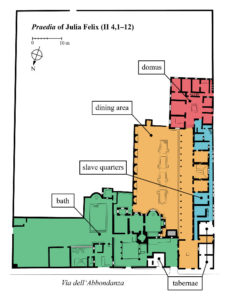
After the earthquake of 62 AD, Julia rented part of her house as apartments and shops “to respectable people” and had opened her private baths to the public.
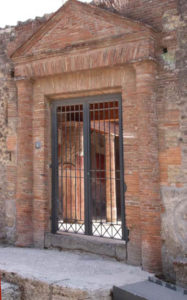
Julia Felix’s bath were magnificent
At their center a shallow basin functioned as an impluvium. Its bottom was decorated with a splendid black and white mosaic featuring a furnace man (important to keep the baths warm!) and a marine scene with dolphins and tritons.
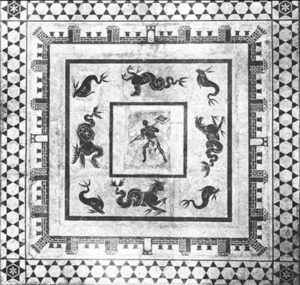
This mosaic is now set in the floor of the Naples archaeological museum.
I found the Julia Felix mosaic so stunning I had to recreate it.
When I rebuild an ancient design, I work by pieces. I separate the original design in several smaller parts and recreate them one at a time. Finally, I recombine the various parts to recreate the whole design.
I separated Julia’s mosaic in 5 main parts
- Furnace man
- Tritons (4 of them)
- Dolphins (4 of them)
- Fortifications
- Stars border.
And I went to work… with the help of my good friends Gimp and Inkscape.
The 4 dolphins, 4 tritons and the furnace man are clearly defined individual designs. Antic mosaicists, even though they very often worked from cartoons, never reproduced the same design twice in order to keep their creations more lively.
Nine individual creatures
And so here are the recreated drawings of the 9 creatures :
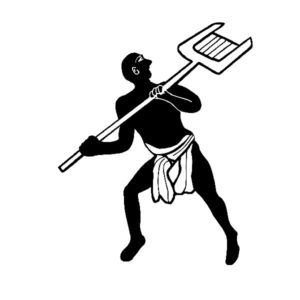
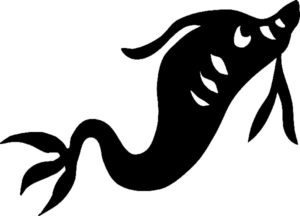



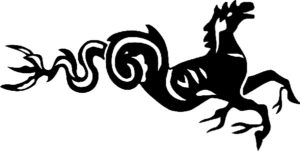
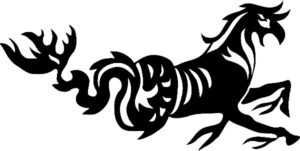
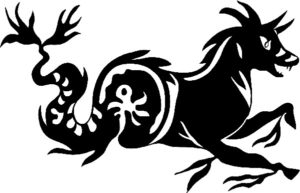

Town Fortifications
The Pompeiians were proud of their city’s walls and liked to have them represented on mosaic decorating their homes. Pompeii became Roman colony and his citizen roman in 89 BC but the city existed for many hundreds of years before that. Its people, among them the Samnites, had very early built a set of defensive walls as a protection against many enemies, including the Romans.

I designed one wall of the fortifications as an element and built the square by combining 4 elements on a square.
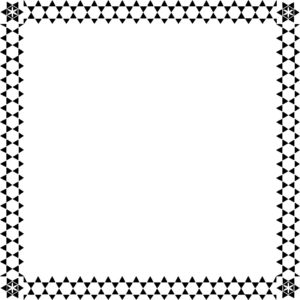
The external border is a combination of 4 lines of stars.


Drawing those individual pieces is time consuming, but once you have them all, it becomes quite easy to out them together. And you can use them again later in different designs.
Assembling the elements of the Julia Felix mosaic
I first drew a square around the furnace man
Added the dolphins and tritons around.
and surrounded them by the city walls
And inally added the starry border !

Feel free to use the images on this page for your own designs.

